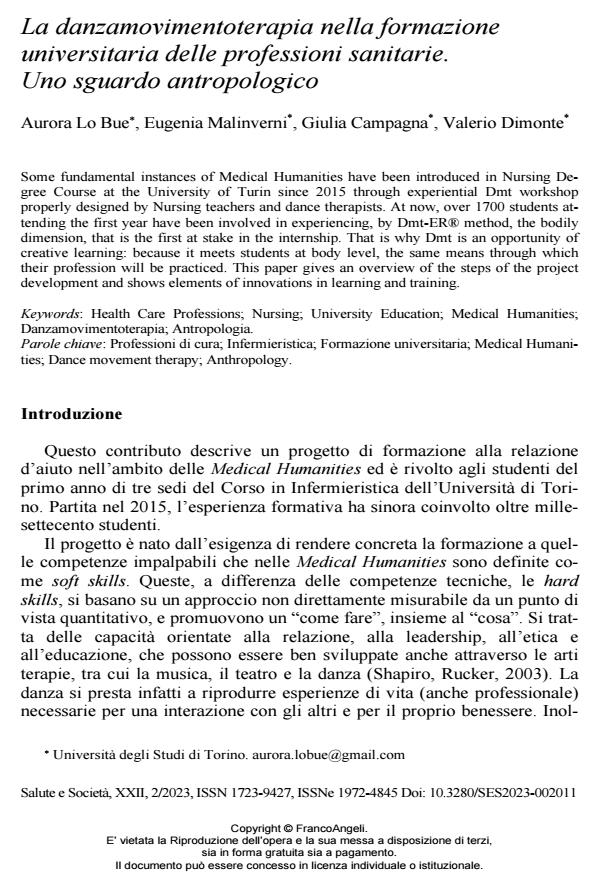La danzamovimentoterapia nella formazione universitaria delle professioni sanitarie. Uno sguardo antropologico
Journal title SALUTE E SOCIETÀ
Author/s Aurora Lo Bue, Eugenia Malinverni, Giulia Campagna, Valerio Dimonte
Publishing Year 2023 Issue 2023/2
Language Italian Pages 11 P. 118-128 File size 230 KB
DOI 10.3280/SES2023-002011
DOI is like a bar code for intellectual property: to have more infomation
click here
Below, you can see the article first page
If you want to buy this article in PDF format, you can do it, following the instructions to buy download credits

FrancoAngeli is member of Publishers International Linking Association, Inc (PILA), a not-for-profit association which run the CrossRef service enabling links to and from online scholarly content.
Some fundamental instances of Medical Humanities have been introduced in Nursing Degree Course at the University of Turin since 2015 through experiential Dmt workshop properly designed by Nursing teachers and dance therapists. At now, over 1700 students attending the first year have been involved in experiencing, by Dmt-ER® method, the bodily dimension, that is the first at stake in the internship. That is why Dmt is an opportunity of creative learning: because it meets students at body level, the same means through which their profession will be practiced. This paper gives an overview of the steps of the project development and shows elements of innovations in learning and training.
Keywords: Health Care Professions; Nursing; University Education; Medical Humanities; Danzamovimentoterapia; Antropologia.
Aurora Lo Bue, Eugenia Malinverni, Giulia Campagna, Valerio Dimonte, La danzamovimentoterapia nella formazione universitaria delle professioni sanitarie. Uno sguardo antropologico in "SALUTE E SOCIETÀ" 2/2023, pp 118-128, DOI: 10.3280/SES2023-002011